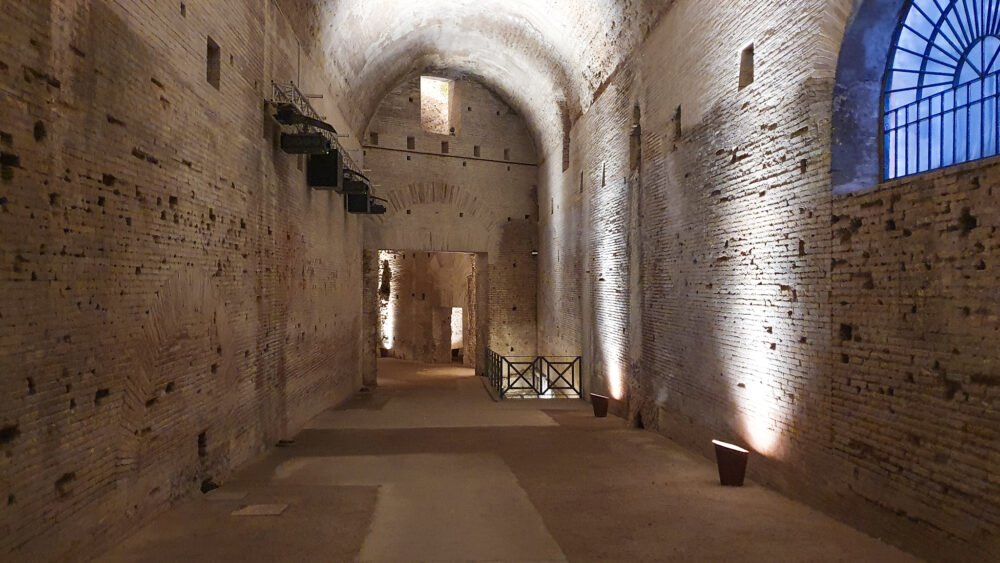Much of the history of Ancient Rome is visible by simply walking around the city!
The Colosseum, the Roman Forum, and remains of ancient temples like Hadrian’s Temple in Piazza di Pietra, the Pantheon, or the ruins in Largo Argentina are just a few of the famous landmarks you can admire in Rome’s historical center.
But there is much more history lying beneath the modern city of Rome: underground, the city is just as teeming with things to see!
You see, most of what you currently can visit in the Italian capital was built on top of ancient Roman buildings.
Regular construction and renovation work constantly brings to light ancient ruins and new findings of a bygone Rome.
We aren’t kidding when we say that thousands of archaeological sites have discovered by mistake (including places like Domus Aurea and more!), and many more are yet to be discovered.
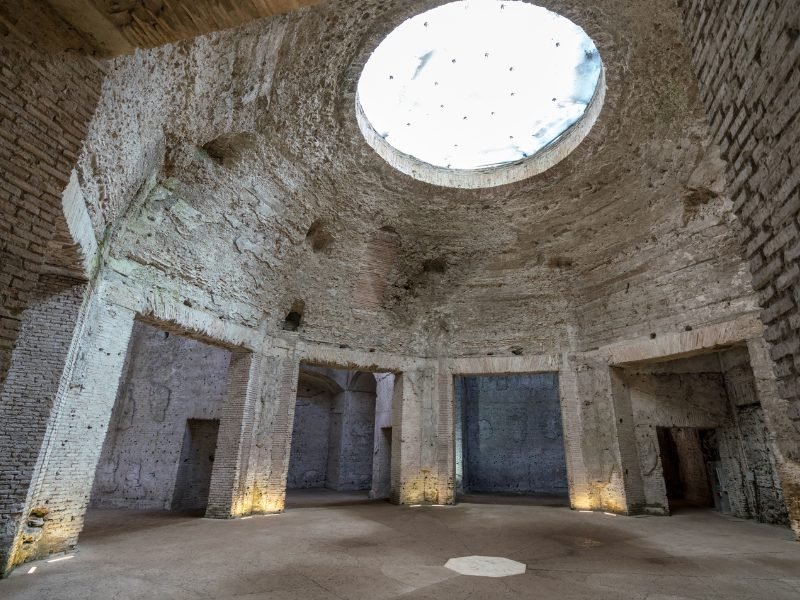
What remains of Ancient Rome, with its luxurious houses, cemeteries, churches, and temples, lies just a few meters under your feet in the most unlikely places.
The official website of Rome’s undergrounds recorded over 12,00 sites in Rome and its surroundings.
While most of these sites are only able to be visited for research purposes, travelers can visit many of them as long as they are on a guided tour.
Here are only a few of the most notable sites you should visit if you’re curious about the history of Rome.
Although most of these sites date back to Ancient Rome, there are also a couple more recent ones.
Remember that you must book a guided tour to visit these sites, so plan accordingly — and in advance in most instances, especially during the high season.
Why Are There So Many Catacombs in Rome?
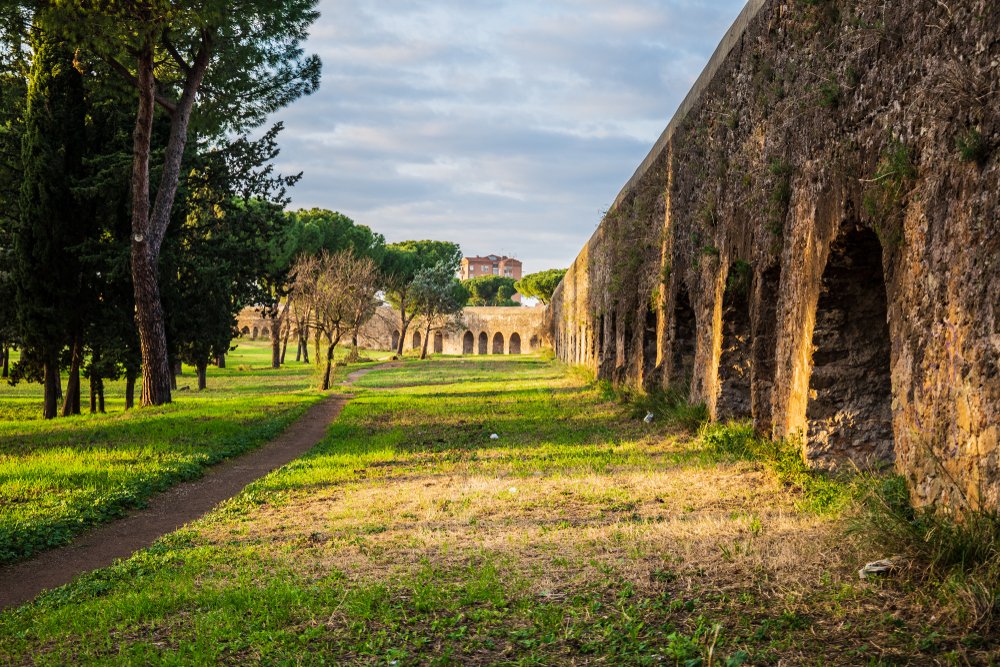
Did you know that there are nearly 500 miles of underground catacombs located beneath Rome… and only a mere fraction of them have been explored?
Ancient Rome’s unique history means that there’s far more to the Eternal City than meets the eye, and going underground in Rome offers you some unique Rome hidden gems that few other travelers get to see.
The catacombs were built starting in the 2nd century CE in Rome, after the Roman Empire enacted laws banned the burial of the dead within Rome’s city limits.
These catacombs originally were intended only to serve as underground crypts to bury their dead.
But these underground tunnels began to serve other purposes, these dark passageways also functioning as hiding places during periods of unrest, as well as places of worship and for religious art.
Rome Underground Tours: The Best Catacomb Tours in Rome
Catacombs of St. Callixtus

Among the largest and most important catacombs in Rome, the Catacombs of St. Callixtus served as the official cemetery of the Church of Rome.
St. Callixtus used to be a deacon, and in the 3rd century CE, he was entrusted with the administration of the cemetery.
The vast underground cemetery is divided into several areas based on the people buried there.
The area dedicated to the graves of the Popes is also called “the little Vatican” and houses the tombs of 16 former Popes!
In the catacombs, you can also visit the Crypt of St. Cecilia, a martyr and the popular patron saint of music, which have beautiful mosaics inside.
Her relics were held in the crypt for roughly five centuries before being moved to the Basilica of Saint Cecilia in Trastevere.
The tomb also features a beautiful statue of St. Cecilia, a copy of Stefano Maderno’s statue from 1599. Other areas are dedicated to St. Miltiades, St. Gaius, and St. Eusebius.
Finally, the cubicles of the sacraments house family tombs, decorated with frescoes you can still admire.
A tour here lasts about 40 minutes and include skip-the-line tickets.
Capuchin Crypt
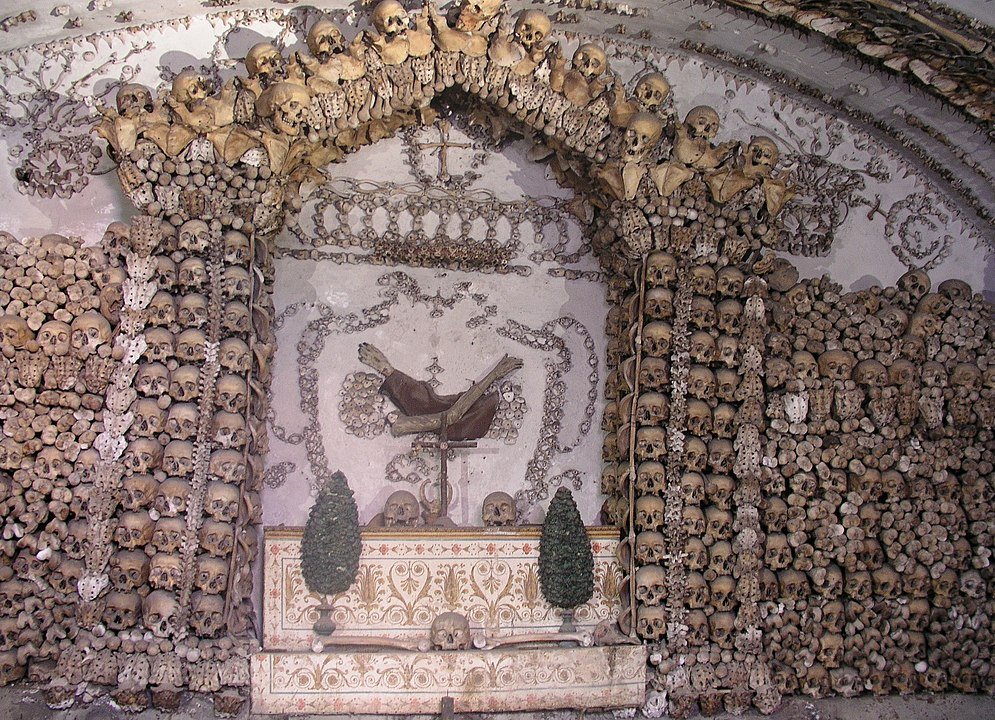
The Capuchin Crypt in Via Veneto, also known as the bone chapel, is undoubtedly a unique place to see in Rome underground.
Under the church of Our Lady of the Conception of the Capuchins, the crypt was built in the first half of the 17th century by the wish of Pope Urban VIII, whose brother, Antonio Barberini, was a Capuchin brother.
Barberini, who was a cardinal, decided to excavate the remains of thousands of Capuchin brothers from a nearby monastery and use them to decorate the walls of the crypt.
In the following decades, many Capuchin brothers decided to allow their remains to be used for the same purpose.
Nowadays, the crypt holds the remains of 3,600 Capuchin brothers adorning the walls.
In the on-site museum, you can learn more about the story of the crypt and the Capuchin brothers and admire a painting of Saint Francis by Caravaggio.
If you’re looking for a unique site to see an off the beaten path side of Rome, this must be on your list.
Catacombs of Domitilla
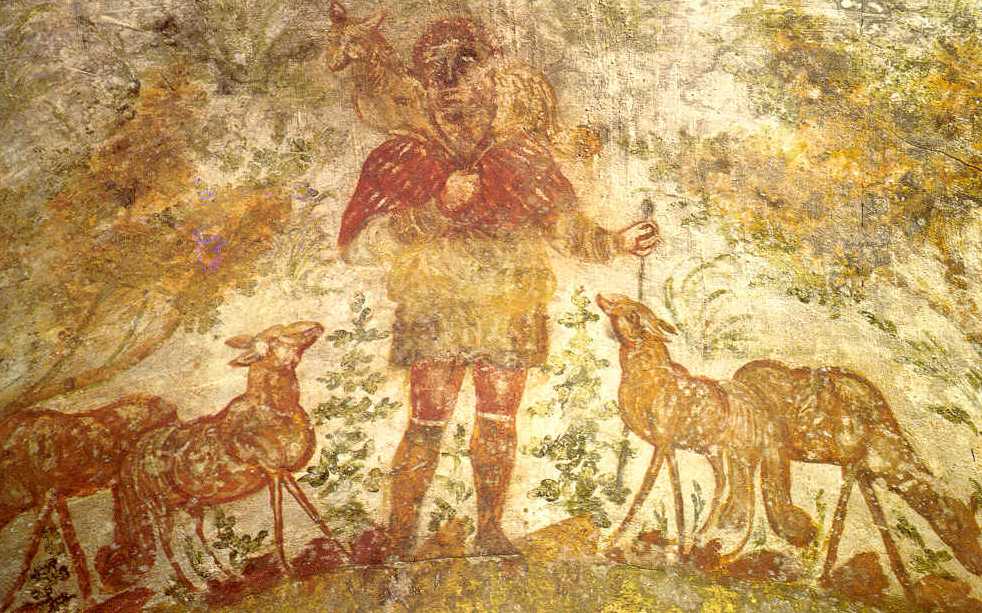
Roughly 17 kilometers of galleries and halls spread across four levels make up one of the largest catacombs in Rome!
The Catacombs of Domitilla are under the ancient Via Ardeatina, on the property of Flavia Domitilla, a noblewoman and the granddaughter of emperor Vespasian.
These Roman catacombs were built between the 2nd and 3rd centuries CE and are among the oldest in Rome.
Alongside the tombs, you can also visit a semi-underground basilica dedicated to Saints Nereus and Achilleus, the only one still visitable in all the existing catacombs in Rome.
The basilica houses some of the oldest examples of Christian art, making it a must-see on an underground tour of Rome.
Many of the niches and cubicles you can see in the underground cemetery are decorated with Christian frescoes and pagan paintings.
A visit to these catacombs is a unique experience that will allow you to see the rich Roman history that lies beneath for yourself!
Book a tour of the Catacombs of Domitilla and San Clemente Underground here!
Catacombs of Priscilla

Also known as “the queen catacumbarum” due to the many martyrs buried here, the Catacombs of Priscilla were among the first ones to be uncovered in the 16th century.
Despite being robbed of tombstones, sarcophagi, and even bodies soon after its discovery, the catacombs remain among the most significant in Rome.
The tombs feature beautiful paintings, including episodes from the Old and New Testaments, inscriptions in Greek and Latin, and many symbols.
A niche in the underground cemetery preserves the oldest depiction of the Virgin Mary (above), dating to the end of the 2nd century.
The catacombs were dug in tuff (a volcanic rock) and can be accessed from the convent of the Benedictine Sisters of Priscilla on Via Salaria.
Book your entrance tickets to the Catacombs of Priscilla here!
Catacombs of Saint Sebastian
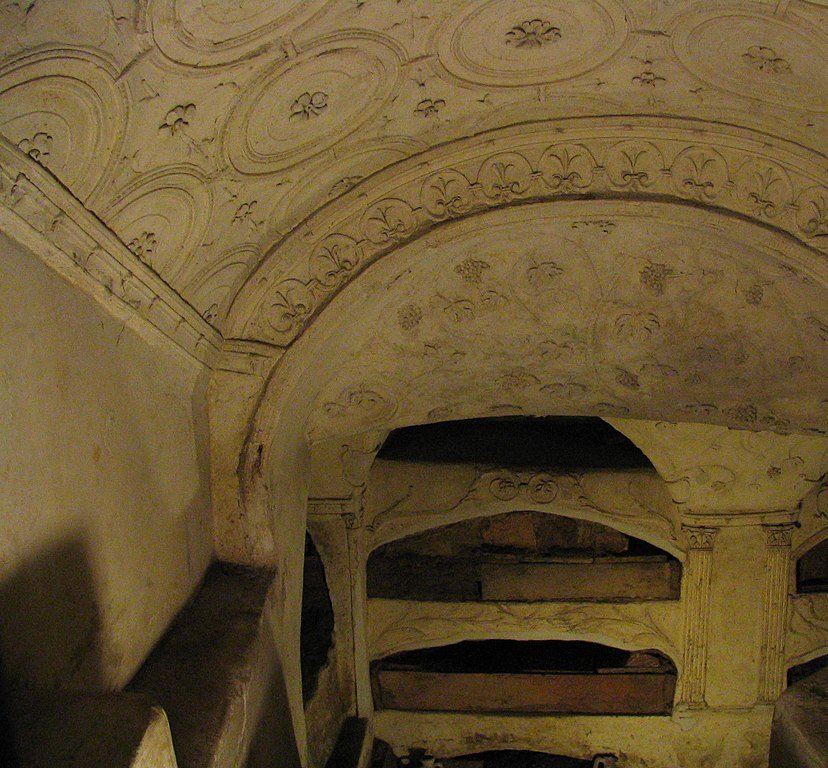
Near Parco dell’Appia Antica, where many of Rome’s underground cemeteries were built, the Catacombs of Saint Sebastian are dedicated to the martyr buried there.
The cemetery was anciently known as Memoria Apostolorum (Apostolic Memorial) due to the liturgical celebrations dedicated to the Apostles Peter and Paul that were held here.
Inside the catacombs, there were many inscriptions dedicated to the two apostles, and in the 4th century, the emperor Constantine decided to build a basilica here to honor Peter and Paul.
Inside the Basilica of St Sebastian Outside the Walls, known in the ancient times as Basilica Apostolorum, you will also find a Museum of Sarcophagi and a masterpiece by Bernini, among other works of art.
You can find the the underground cemetery beneath the church.
Catacombs of Marcellinus and Peter
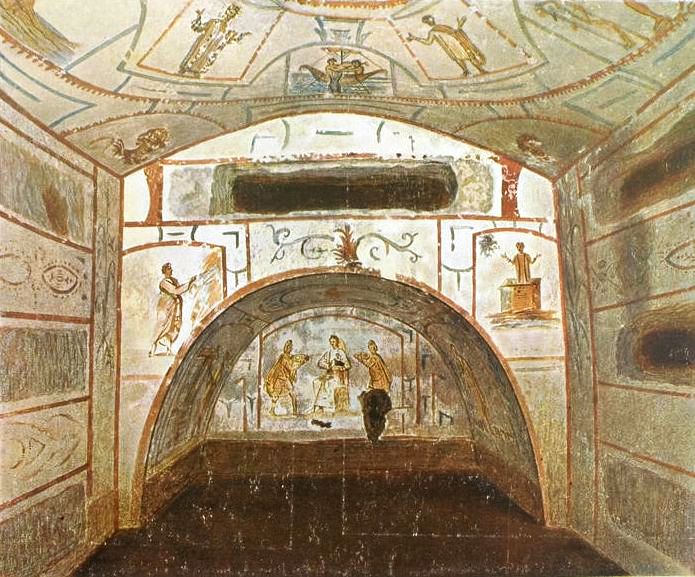
Among the less visited catacombs in Rome, the Catacombs of Saints Marcellinus and Peter are under the church dedicated to the two saints and built during the reign of Constantine.
The emperor also built here a mausoleum for his mother, Helena, alongside the cemetery of his personal escort unit, the Equites Singulares.
The catacombs are known for the well-preserved colorful frescoes covering the niches and depicting scenes of the Old and New Testaments.
What started as a sepulcher divided into two niches for the two martyrs was later expanded over the centuries to contain space for up to 15,000 burials.
If you want to get off the beaten path of Rome’s sightseeing circuit and see some of the lesser visited sites underground in Rome, pay a visit to these catacombs and the Mausoleum of Helena!
Catacombs of Saint Agnes
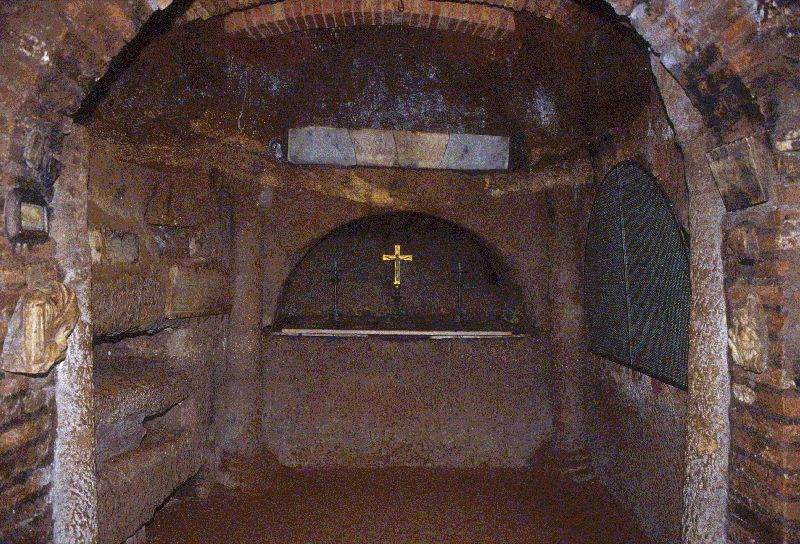
The Catacombs of Saint Agnes are related to the story of the martyr whose body was buried here.
Saint Agnes was persecuted during the Diocletianic persecution of Christians and was executed in the 4th century in Piazza Navona, which in ancient times was known as as the Domitian stadium.
According to one of the legends, in the 4th century, the 12-year-old Agnes declined a marriage proposal saying she only loved Christ.
She was then denounced as Christian and carried naked on a cart along the streets of Rome to a brothel.
The legend goes that when a customer tried to touch her, an angel appeared to protect her chastity and blinded the man.
Agnes was then accused of witchcraft and sentenced to death by burning. The flames, however, would not burn her but divide around her body, leaving her unscathed.
After seeing the miracle, an officer beheaded the girl. The resemblance to the killing of lambs is the reason why the saint is often depicted with the animal.
The body of the martyr was buried in the existing catacombs on Via Nomentana, later dedicated to her.
On the site of the catacombs, a basilica was built by Constantin’s daughter and later replaced by another one, ordered by Pope Honorius I.
Nowadays, you can visit the 7th-century basilica alongside the catacombs.
The skull of Saint Agnes is in the crypt of the Church of Saint Agnes in Piazza Navona, on the site where the girl was executed.
Catacombs of Vigna Randanini
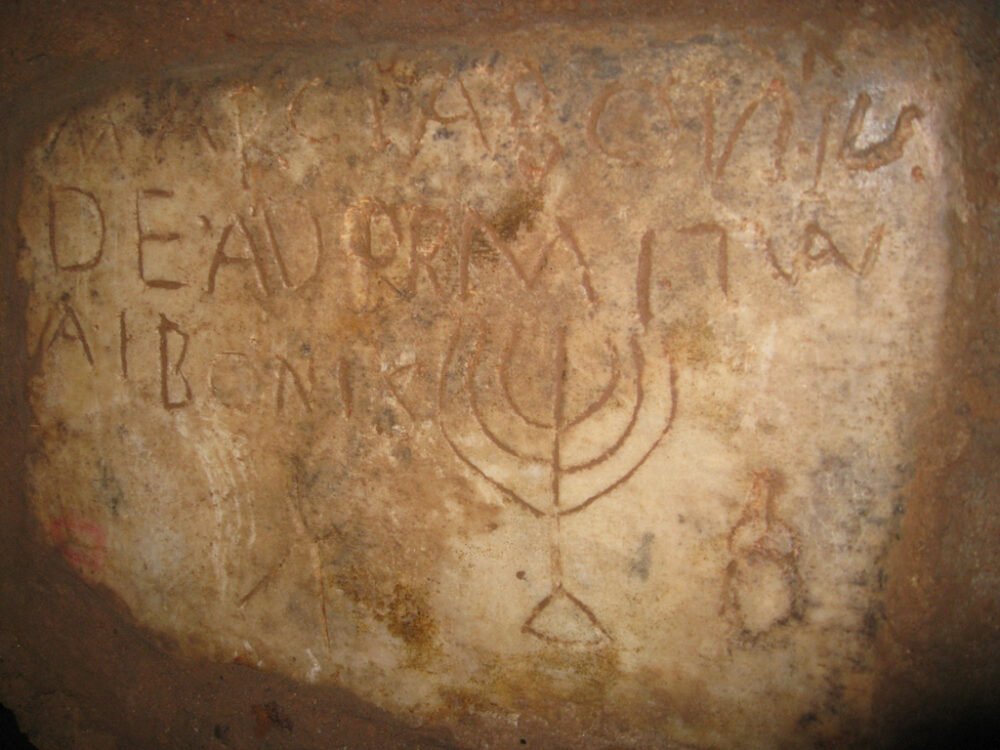
Nearby the ancient Via Appia, the Jewish Catacombs of Vigna Randanini were discovered by chance in 1859.
The underground cemetery was built between the 2nd and 4th centuries and expanded multiple times to fit the requirements of the Jewish community in Rome.
The importance of these catacombs lies in the decorations adorning the various areas, both pagan and Jewish, including an inscription of a menorah.
The highlight of the cemetery is a tomb with colorful, decorated walls, including painted animals, flowers, and inscriptions.
The Catacombs of Vigna Randanini are near the ones of St. Sebastian, St. Domitilla, and St. Callixtus, in the beautiful area of Via Appia Park.
This is also where you can also walk the Ancient Appian Way (Via Appia Antica).
Underground Grottoes in Vatican City
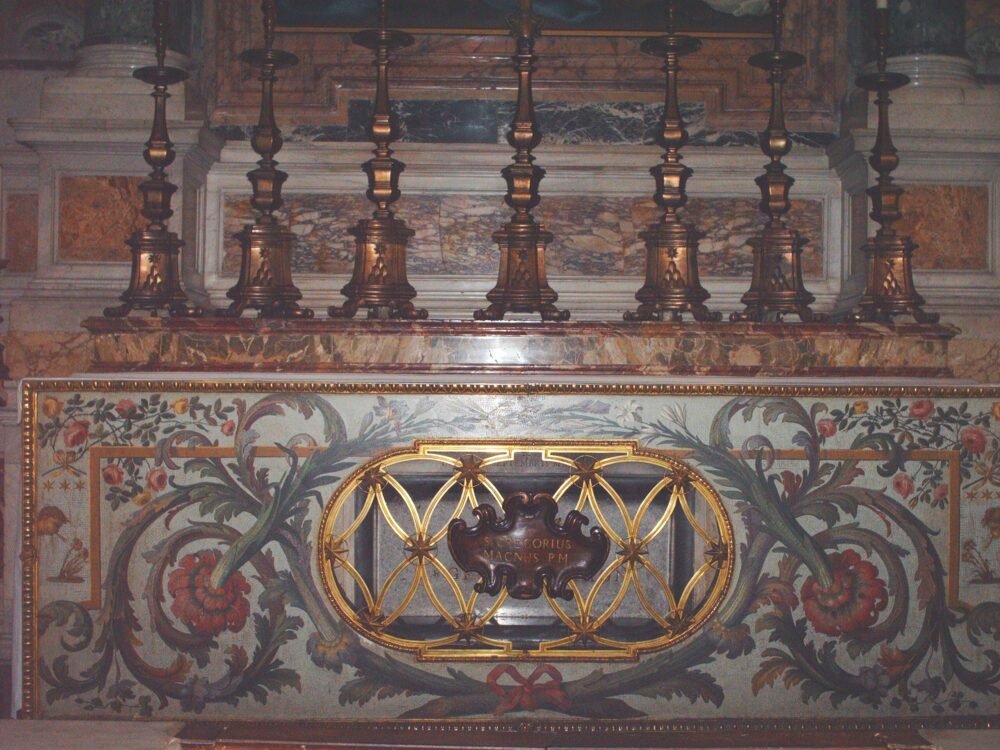
It may be hard to believe that there’s a whole world beneath the crowds in the Vatican Museums and Sistine Chapel, but there is!
The Underground Grottoes in the Vatican, right below St. Peter’s Basilica, house the tombs of many Popes and significant personalities in Rome’s history, including monarchs and dignitaries.
The Grottoes occupy the site of the ancient basilica built by Emperor Constantine, on top of which the current basilica stands.
The ancient chapels now house the tombs of the Popes, while the old apse, right under the current dome of the basilica, holds the tomb of the Apostle Peter.
The Grottoes house a total of 22 Popes, including St. Peter. The tour of the underground burial place will allow you to see the decorated tombs with sculptures and inscriptions.
You can combine the visit to St. Peter’s Basilica with a tour of the Grottoes, which are accessible from inside the church.
It’s definitely a unique site to see when you visit Rome.
Book your tour of the Underground Grottoes of the Vatican here!
Vatican Necropolis
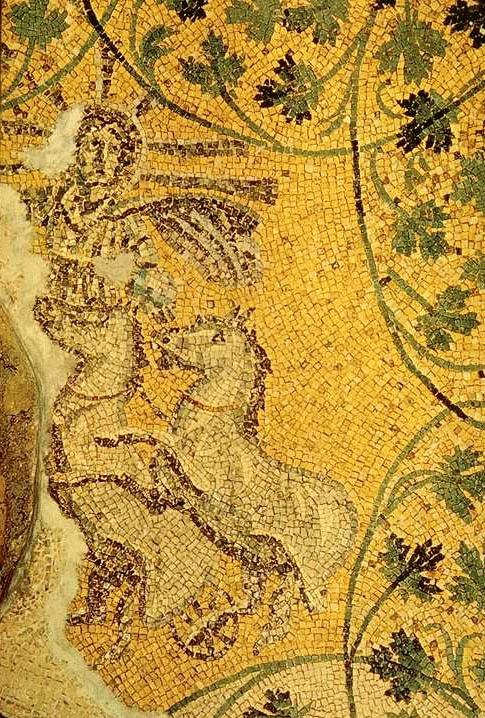
Not to be mistaken with the Vatican Grottoes, the Vatican Necropolis is another underground site which lies several meters below St. Peter’s Basilica, further beneath the Vatican Grottoes.
The necropolis was discovered only in 1940, and it used to be a pagan burial site dating to the 1st century CE.
It is thought that St. Peter was buried here after the crucifixion ordered by Nero.
According to historians, the Constantinian basilica was built on top of St. Peter’s tombstone.
When the necropolis was uncovered between 1940 and 1949, the goal was to find St. Peter’s tomb so Pope Pius XI could be buried next to him.
While the actual tomb of St. Peter was never identified, the excavations brought to light many pagan and Christian tombs and mausoleums.
Historians believe that many former Popes were buried in the necropolis too.
Other Underground Rome Attractions & Walking Tours
Domus Aurea
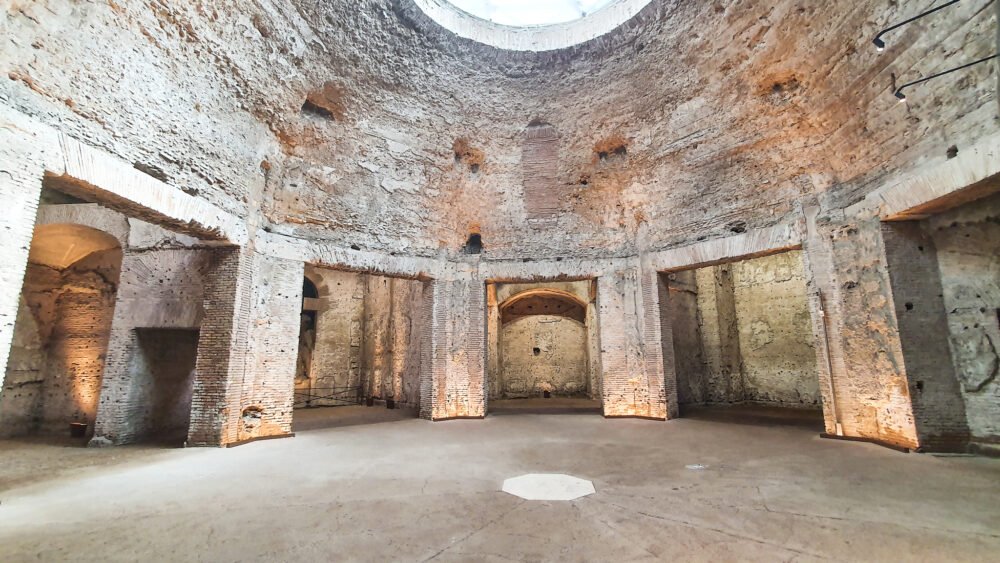
The Domus Aurea used to be the residence of Emperor Nero.
Built in the 1st century CE, the palace was supposed to be the most grandiose and beautiful palace in Rome.
The name Domus Aurea (Golden House) was due to the presence of this precious metal in many areas of the residence.
Soon after his death, the following emperors decided to cancel all traces of Nero’s presence.
Part of the Domus Aurea was destroyed to make space for the Colosseum arena, while the rest was covered to build the Baths of Trajan.
After a resident accidentally fell into an unusual cave in the 15th century and discovered an area filled with painted walls, the local artists, including Michelangelo and Raphael, explored the underground to study the area and take inspiration for their works.
This is how Renaissance grotesque motifs came to life. In fact, the word grotesque comes from the Italian “grottesca”, which means “of a cave”, referring to the underground of the Domus Aurea!
While the paintings faded throughout the centuries, the Domus Aurea remains an important archaeological site in Rome.
This site is very fragile, so you can only visit on a small group tour led by an expert guide who will join you at the meeting point to explain the site.
Vicus Caprarius: Trevi Fountain Aqueduct
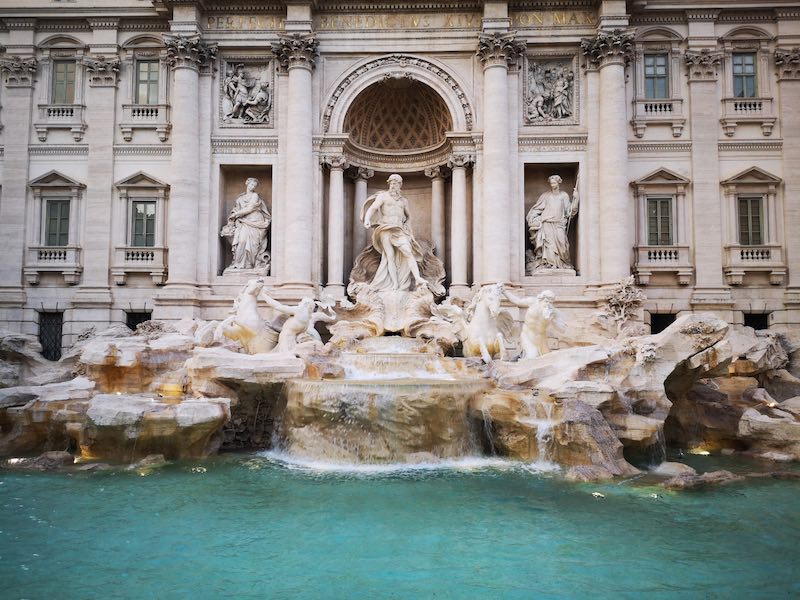
You have likely admired the renowned Trevi Fountain and the busy Spanish Steps nearby, with crowds heaving above ground.
However, you may not know that under Trevi Fountain, there is an archaeological area known as Vicus Caprarius or the City of Water.
The archaeological area lies roughly nine meters under the Trevi Fountain and was discovered during the renovation of the old Cinema Trevi.
The excavations brought to light the ancient Virgin Aqueduct and many residential areas, alongside several artifacts like amphorae, decorative items, and ancient coins.
The Virgin Aqueduct (Aqua Virgo) is the only Ancient Rome aqueduct still functioning and bringing water to Rome’s monumental fountains all over the historical center.
If you want to take a trip back in time and see the impressive masonry of Ancient Rome in an underground setting, this is one of the best places to visit to tour Rome underground.
Roman Houses of the Celia
Halfway between the Colosseum and the Circus Maximus, under the Basilica dei Santi Giovanni e Paolo, you can visit the ruins of an ancient Roman house (Domus).
The heritage museum opened in 2002 and allows visitors to admire beautiful frescoes dating as far back as the 2nd century CE.
The underground structure is that of a rich Domus in what used to be a residential area in Ancient Rome, Celio.
Before being transformed into a single, large Domus filled with luxurious decorations, the building was a complex of commercial units and apartments.
The Basilica dei Santi Giovanni e Paolo was built on top of the residential area in the 5th century.
You can pair your visit to the Roman Houses of the Celio with that of the beautiful basilica, also known as the Church of Chandeliers (Chiesa dei lampadari) due to the many crystal chandeliers hanging along its decorated walls.
Circus Maximus Mithraeum
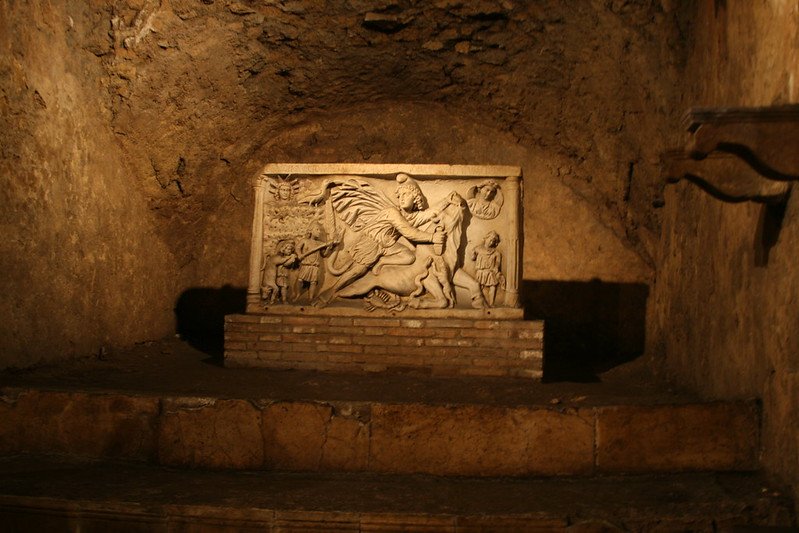
Like many underground places in Rome, the Circus Maximus Mithraeum was discovered randomly!
It was excavated during unrelated works to build a storage space for the costumes and scenography of the Opera Theater.
A Mithraeum was a temple dedicated to the worship of Mithra, the Iranian god of the sun, justice, and contract.
The Mithraeum was nearby Circus Maximus and is thought to have been one of the largest of its kind in Rome.
Nowadays, you can find the entrance to the Mithraeum near the church Santa Maria in Cosmedin, famous for the Mouth of Truth.
The main feature of the Mithraeum is the bas-relief of the tauroctony, a popular representation in the Mithraic cult depicting the god Mithra slaying a bull.
Mithraeum of Palazzo Barberini
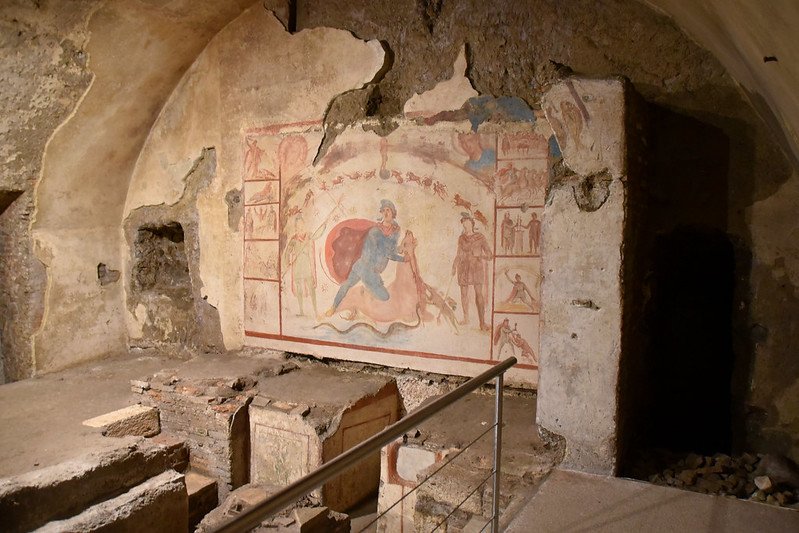
In the heart of Rome, behind Palazzo Barberini, this Mithraeum is one of the best-preserved ones in Rome, featuring a painting in vivid colors of the typical tauroctony.
The painting shows Mithra slaying a bull whose blood is sucked by a dog and a snake. The painting also includes a depiction of the zodiac signs and the history of Mithra on both sides of the central representation.
The Mithraeum of Palazzo Barberini is one of only two discovered in Rome to contain a painting giving insights into the cult of Mithra.
The other similar Mithraeum is the one of Santa Prisca.
This is yet another of the random discoveries of Rome underground that brought to light an important historical sight.
The Mithraeum saw the light in 1936 during the reconstruction of the Palazzina Savorgnan di Brazzà in the back yard of Palazzo Barberini.
San Clemente Underground
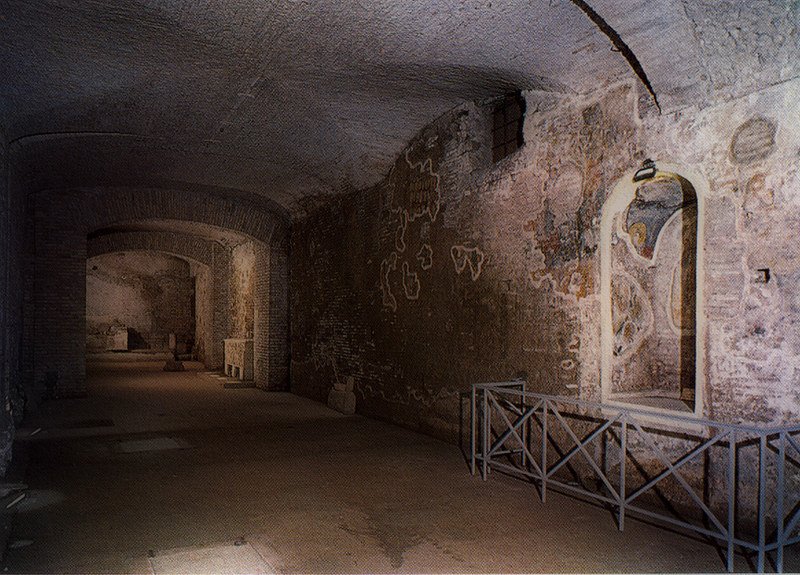
San Clemente Basilica, just a few streets from the Colosseum, was built on top of multiple layers of ancient buildings uncovered between the 19th and 20th centuries.
The current basilica located at the street level is dedicated to Pope Clement of Rome and lies on top of the previous basilica of the same name, built in the 4th century.
After the first excavations uncovered the ancient basilica, they continued until they brought to light the third layer of buildings dating to the 1st century CE.
Later, they found a fourth layer that showed the building had been destroyed when Nero set Rome on fire in 64 CE.
Nowadays, under the basilica, you can visit what used to be a big ancient Roman house, which served as foundation for the ancient basilica.
There is also a small complex of houses with a courtyard that used to host a Mithraeum, recognizable from the tauroctony bas-relief.
This can be seen on a 3 hour tour that combines this site with the Catacombs of Domatilla.
Tour this alongside catacombs on this small group semi-private tour!
Other Rome Underground Tours
Crypts, Bones & Catacombs: An Underground Tour of Rome
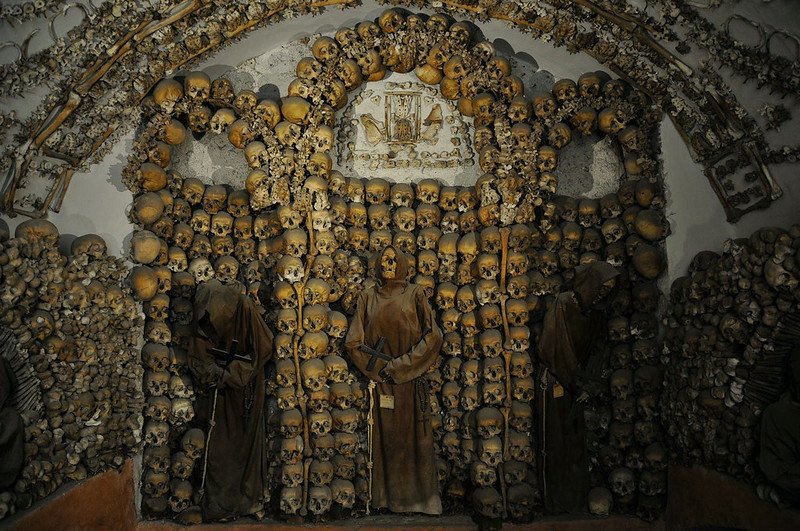
This small group guided tour of underground Rome gets you off the beaten path of the typical Rome itinerary and into some unusual sights from your expert tour guide.
The first stop on this underground Rome tour is the Capuchin Crypt aka “The Bone Chapel”, where you’ll see not only the bones but also the mummified remains of over 4,000 Capuchin monks.
Next up is another set of catacombs along the Appian Way, which was first dug out by Roman Christians. These catacombs are not only a resting place but also home to frescoes, mausoleums, and wall inscriptions.
You’ll also get to drive along the Appian Way, which dates back to the 4th century BCE, and visit the beautifully preserved Tomb of Caecilia Metella, dating back to the year 1 BCE.
The final part of the tour are the Roman aqueducts located on the outskirts of town, one of the most important achievements in architecture in the ancient Roman empire.
Colosseum Underground Tour (+ Roman Forum & Palatine Hill)

Everyone goes to the Colosseum… but not everyone knows that there is an underground part of the Colosseum that you can access.
The underground area (called the hypogeum) is full of tunnels and passageways that used to connect a series of cages and dungeons beneath the Colosseum’s arena floor.
This underground level of the Colosseum was a purgatory of sorts, where enslaved people and prisoners were kept before being publicly executed.
The wild animals who were fought and slaughtered by the gladiators for entertainment were also housed in the cages here.
This is one of the best tours to add context to the Colosseum experience and show a bit of Rome’s underground side!
This day tour lasts around 3 hours and brings you to through the amphitheater as well as grading you special access to the underground area which few people get to see!
Book your Underground tour of the Colosseum, Roman Forum & Palatine Hill here!
Nighttime Underground Colosseum Tour
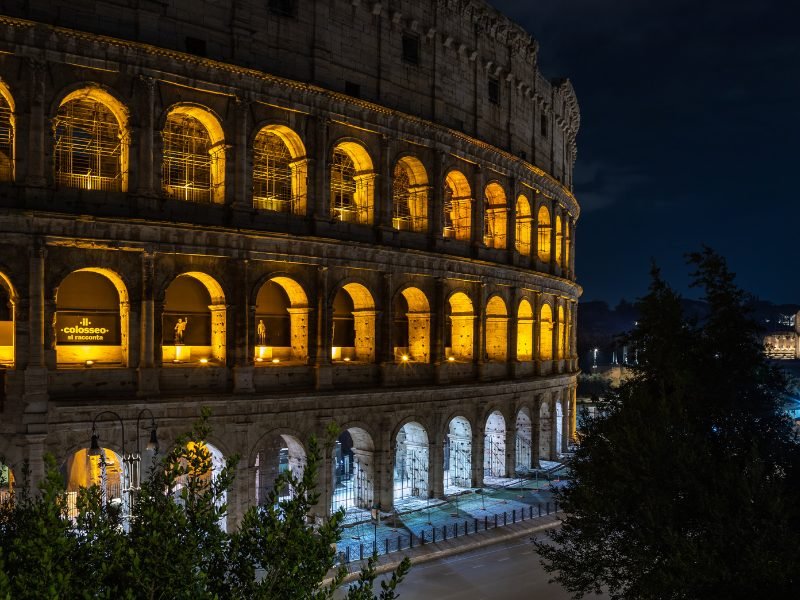
For an even spookier version of the above tour, do it under the moonlight with a night tour! You can skip the daytime long lines at the Colosseum and enjoy it in peace.
You’ll get to see the same area of the underground but with the added unsettling ambiance of the low evening light.
However, this tour doesn’t give you as much insight into the Roman Forum, so do keep that aspect in mind… this is more about the Colosseum arena floor, the gladiator arena, and its underground section.
Book your nighttime colosseum tour with underground access here!

Roxana is a Romanian-born freelance travel writer who has lived in Italy for over 15 years. She has a Master’s in Journalism and a Bachelor’s in Film Studies, and she studied at Università degli Studi di Roma Tre. Besides her native Romania, Roxana has lived in Rome, Lisbon, and Berlin, and she has traveled through much of Europe in search of hidden gems, history, and culture.
